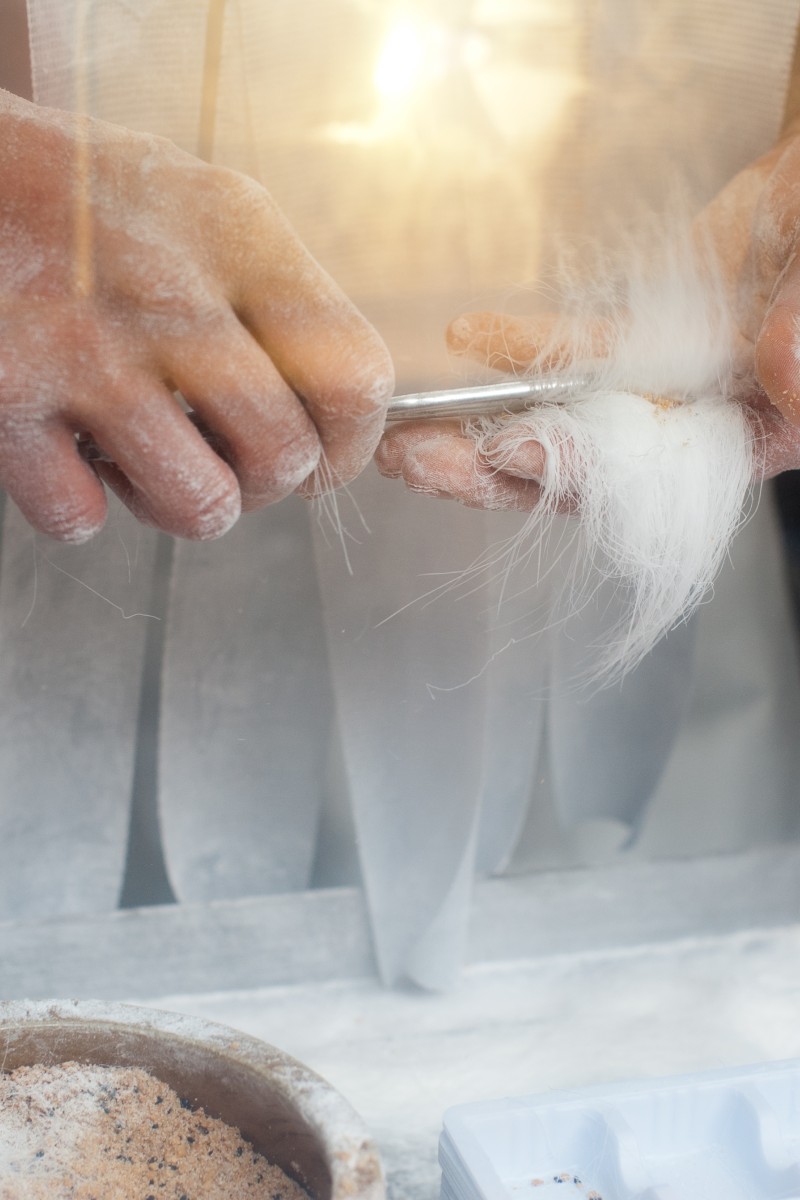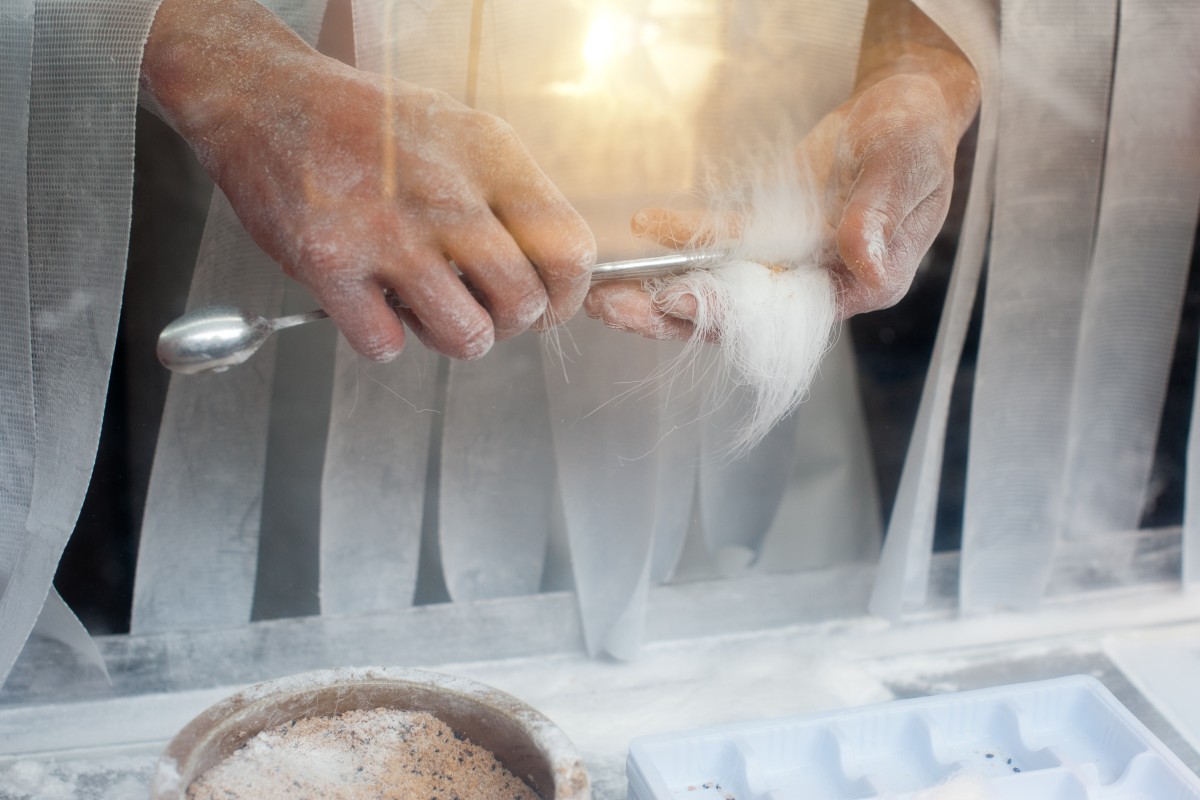
HK Food Culture celebrates local history with traditional foods you've been missing
Modern snacks are everywhere in Hong Kong, but Young Post found a man devoted to continuing the ancient art of dragon beard candy

Hong Kong style milk tea and roasted sweet potatoes. Maltose crackers, egg puffs, glutinous rice balls. If you’ve been in Hong Kong long enough, surely you’ve come across at least a few of these unique cultural delicacies that our city has to offer.
Times Square is currently hosting an exhibition about Hong Kong Food Culture, which features four masters of traditional Hong Kong snacks. Young Post caught up with one those Snack Masters, Andy Chin, who specialises in the much-loved, perhaps slowly fading, dragon beard candy.
We wanted to know about the most difficult part of making this delicious treat. “The whole process of making dragon beard candy is hard,” Chin laughs. “Dragon beard candy used to be food for the kings. It takes a lot of skill. For starters, it has to be heated enough, until it’s considerably harder. It’s very complicated to pull a piece of candy.”
Because it’s not as simple to make as something like glutinous rice balls, there aren’t many people who have mastered the art, so Chin reckons the candy is at risk of disappearing.
“If you’re talking about the ones who sell it seriously and make it an occupation, I don’t think there are a lot of other people in the industry,” Chin says. “Maybe only four or five. So it might fade away for a while, but maybe it’ll come alive again after a while.”
So what does Chin plan to do about this? “I haven’t opened any classes,” he says. “Not now, but maybe I will after I retire. Maybe opening a class and teaching people will keep the art alive.”
But it’s not just about finding the students. There must also be a change in the city’s culture – and its politics – to make sure the art survives.
“I have had many disciples, but after they learned, they don’t do it anymore. Even my daughter knows how to make the candy, but I don’t think she’ll use it. There’s no place for them to do it,” Chin says.
“The government is focusing on other things right now, and they don’t seem to have started on Chinese culture.”
Making the dessert is something of a lost art, like so many other parts of our local culture. As the city marches on, family recipes and artistic techniques are forgotten or left behind, and rarely passed along to the next generation, but Chin says there’s hope.
“Young people nowadays are a bit unknowledgeable about dragon beard candy. But the 30- and 40-year-olds bring their kids and say: ‘That’s what I used to eat long ago.’ They introduce the snacks to their children and tell them what’s good. People look and go: ‘Oh, that’s food from the old days!’ There are still lots of people who will come and eat them.”
And if there is still any fear that the candy could be gone for good, Chung says as long as there are hungry teenagers, dragons beard candy will be around for a long time to come.
“Young people like to try new things,” he says. “They like street snacks, they’re willing to consume.”
